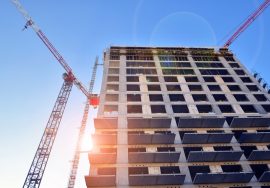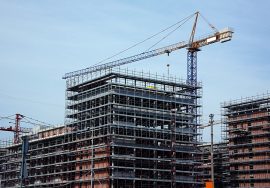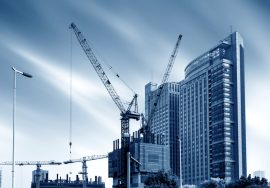
Sustainable Building: The Future of Green Construction in India
Sustainable Building: The Future of Green Construction in India
In the modern world, sustainable building has become more than just a trend—it’s a necessity. As cities grow and resources become limited, the construction industry must shift towards green construction practices that minimize environmental impact and promote long-term efficiency. India, one of the fastest-developing nations, is now embracing sustainable building methods to create a balance between development and environmental preservation.
What Is Sustainable Building?
Sustainable building refers to designing and constructing structures that are environmentally responsible and resource-efficient throughout their life cycle—from planning and design to construction, operation, and demolition. It focuses on minimizing the carbon footprint, reducing energy consumption, and using eco-friendly materials that do not harm the environment.
This approach integrates principles of green construction, such as renewable energy use, waste reduction, water conservation, and indoor air quality improvement. Every stage of construction is designed to make the building more energy-efficient and less harmful to nature.
Key Principles of Sustainable Building
1. Energy Efficiency
Energy efficiency lies at the heart of sustainable building. By incorporating solar panels, natural lighting, and passive design techniques, buildings can significantly reduce dependence on non-renewable energy sources. Using materials with high thermal insulation helps maintain indoor temperature, reducing the need for artificial cooling or heating.
2. Sustainable Materials
A major aspect of green construction is the use of recycled or locally sourced materials. Products such as bamboo, reclaimed wood, and fly-ash bricks are not only durable but also have a lower environmental impact. By choosing such materials, builders support local industries and reduce transportation emissions.
3. Water Conservation
In India, where water scarcity is a growing concern, sustainable building techniques like rainwater harvesting, greywater recycling, and low-flow plumbing systems help conserve water. These innovations make buildings self-sufficient and environmentally friendly.
4. Waste Management
Construction waste contributes significantly to landfills. Sustainable building focuses on reducing waste generation through better planning and recycling of demolition debris. Many modern projects incorporate waste management systems to reuse construction materials efficiently.
5. Health and Comfort
Sustainability is not just about the environment; it’s also about human health. Sustainable buildings are designed to improve indoor air quality by using non-toxic paints, proper ventilation, and natural lighting. This results in healthier, more comfortable living spaces for occupants.
Benefits of Sustainable Building in India
-
Reduced Energy Costs:
Energy-efficient designs lower electricity bills, offering long-term cost savings. -
Environmental Protection:
Green construction reduces pollution, conserves natural resources, and combats climate change. -
Economic Growth:
India’s focus on sustainable building is creating new job opportunities in eco-friendly material production and renewable energy sectors. -
Enhanced Property Value:
Buildings with sustainable features attract buyers and tenants who value eco-conscious living, thus increasing market value. -
Government Incentives:
Various state and central government programs in India now offer tax rebates and certification benefits for green construction projects.
Sustainable Building Standards in India
India has several certification systems promoting sustainable building practices. The LEED (Leadership in Energy and Environmental Design) certification and the Indian Green Building Council (IGBC) rating system encourage developers to adopt eco-friendly practices. The Griha Rating System, developed by TERI and the Ministry of New and Renewable Energy, evaluates a building’s performance based on environmental parameters.
These certifications help ensure that green construction projects meet global sustainability standards while adapting to Indian climatic conditions.

How to Get Started with Sustainable Construction
If you are planning a new project or renovation, adopting sustainable building methods is easier than ever. Consult with experienced professionals who understand green design principles, energy modelling, and material selection.
To know more or discuss your green construction project, feel free to contact AMS India. Their expert team can guide you through sustainable construction practices that align with modern environmental standards.
For additional insights, explore the Indian Green Building Council (IGBC)—an external Indian resource dedicated to promoting sustainability in the construction sector.
Conclusion
Sustainable building is shaping the future of India’s construction industry. By integrating energy efficiency, green materials, and eco-friendly technologies, we can create buildings that benefit both people and the planet. The adoption of green construction principles ensures that future generations inherit a cleaner, healthier environment.
Embracing sustainability today isn’t just a choice—it’s our responsibility toward a greener tomorrow.
Read more related articles to enhance your knowledge and make informed decisions
Cost-Effective Modular Construction: Fast, and Sustainable Building Solutions
Smart Modular Buildings: Innovative, Efficient, and Sustainable Construction








